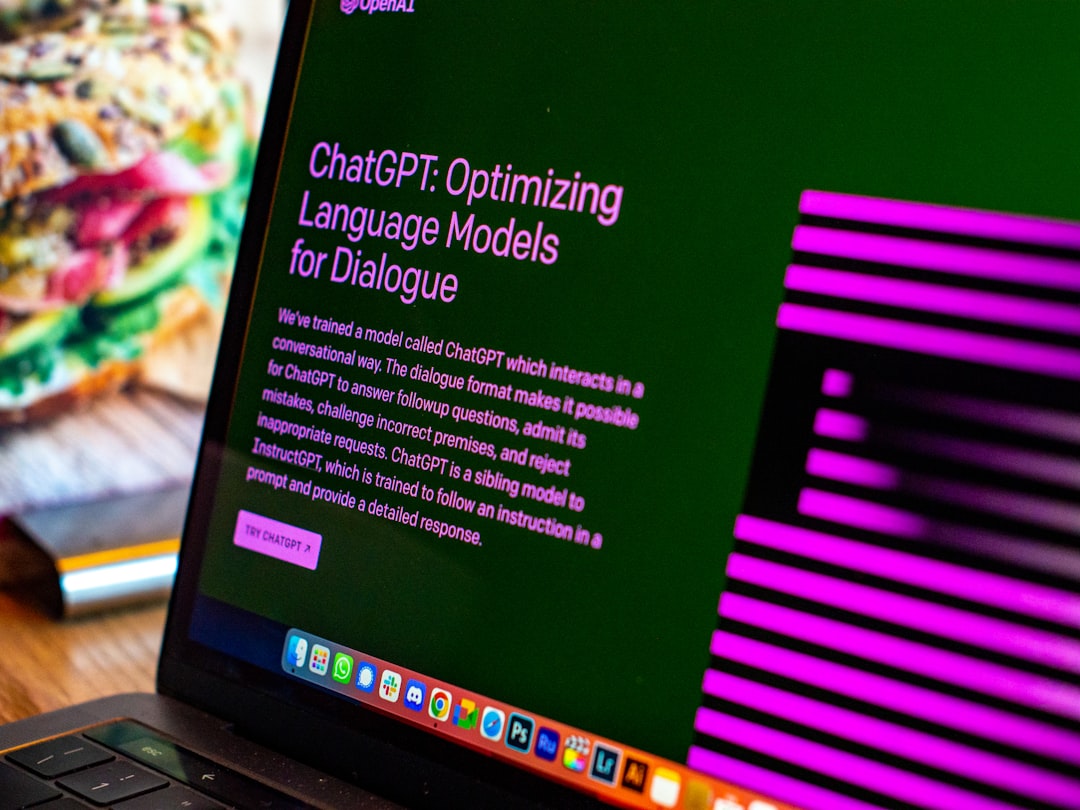In the rapidly evolving landscape of artificial intelligence, Google Cloud Speech-to-Text stands out as a powerful tool that transforms spoken language into written text with remarkable accuracy. This service is part of Google Cloud’s suite of machine learning products, designed to cater to a wide range of industries and applications. With the increasing demand for voice recognition technology, Google has harnessed its extensive research in natural language processing and deep learning to create a solution that not only meets but often exceeds user expectations.
As voice interfaces become more prevalent in our daily lives, understanding the capabilities and functionalities of Google Cloud Speech-to-Text is essential for anyone interested in the intersection of technology and communication. The significance of Google Cloud Speech-to-Text extends beyond mere transcription; it represents a shift in how we interact with machines. By enabling applications to understand and process human speech, this technology opens up new avenues for accessibility, efficiency, and user engagement.
Whether it’s for transcribing meetings, creating subtitles for videos, or powering virtual assistants, the implications of this service are vast. As we delve deeper into its workings, benefits, and applications, it becomes clear that Google Cloud Speech-to-Text is not just a tool but a gateway to a more intuitive and responsive digital experience.
Key Takeaways
- Google Cloud Speech-to-Text is a powerful and accurate tool for converting spoken language into text.
- The service works by using advanced machine learning models to recognize and transcribe speech in real-time.
- Using Google Cloud Speech-to-Text can improve productivity, accessibility, and user experience in various industries.
- The application of Google Cloud Speech-to-Text is vast, including transcribing audio and video content, creating voice-activated devices, and enabling real-time translation.
- While Google Cloud Speech-to-Text offers high accuracy and efficiency, there are concerns about data security and privacy that users should be aware of.
How Google Cloud Speech-to-Text Works
At its core, Google Cloud Speech-to-Text employs advanced machine learning algorithms to convert audio input into text. The process begins with the capture of audio data, which can come from various sources such as microphones, phone calls, or pre-recorded files. Once the audio is received, it undergoes a series of transformations where the system analyzes sound waves and identifies phonetic patterns.
This intricate analysis is powered by deep neural networks that have been trAIned on vast datasets, allowing the service to recognize different accents, dialects, and languages with impressive precision. One of the standout features of Google Cloud Speech-to-Text is its ability to adapt to different contexts and environments. The service utilizes a technique known as “contextual modeling,” which helps it understand the nuances of speech based on the surrounding words and phrases.
This means that it can differentiate between similar-sounding words depending on their usage in a sentence, significantly reducing errors in transcription. Additionally, users can enhance accuracy by providing custom vocabulary or phrases specific to their industry or application, further tailoring the service to meet their needs.
Benefits of Using Google Cloud Speech-to-Text

The advantages of utilizing Google Cloud Speech-to-Text are manifold, making it an attractive option for businesses and developers alike. One of the most significant benefits is its high level of accuracy. Thanks to Google’s extensive research in artificial intelligence and natural language processing, users can expect reliable transcriptions that capture the essence of spoken language with minimal errors.
This accuracy not only saves time but also enhances productivity by reducing the need for manual corrections. Another compelling benefit is the service’s scalability. Google Cloud Speech-to-Text can handle large volumes of audio data seamlessly, making it suitable for enterprises that require real-time transcription for meetings, customer interactions, or media content.
Furthermore, its integration capabilities with other Google Cloud services allow businesses to create comprehensive solutions that leverage multiple technologies. For instance, combining Speech-to-Text with Google Cloud Storage or BigQuery can facilitate advanced data analysis and storage solutions that are both efficient and cost-effective.
Applications of Google Cloud Speech-to-Text
| Application | Metrics |
|---|---|
| Transcription Services | Accuracy, Speed, Language Support |
| Call Center Analytics | Call Transcription, Sentiment Analysis, Keyword Spotting |
| Voice-Controlled Devices | Command Recognition, Multilingual Support, Noise Robustness |
| Video Subtitling | Subtitle Accuracy, Language Detection, Real-time Subtitling |
The versatility of Google Cloud Speech-to-Text lends itself to a wide array of applications across various sectors. In the healthcare industry, for example, medical professionals can use this technology to transcribe patient notes or record consultations efficiently. This not only streamlines documentation processes but also allows healthcare providers to focus more on patient care rather than administrative tasks.
The ability to convert speech into text in real-time can significantly enhance communication within medical teams and improve overall patient outcomes. In the realm of media and entertainment, Google Cloud Speech-to-Text is revolutionizing content creation. Video producers can generate accurate subtitles quickly, making their content more accessible to diverse audiences.
Additionally, podcasters and content creators can transcribe their audio files into written formats for blogs or articles, expanding their reach and engagement with listeners. The technology also finds applications in customer service, where companies can analyze call recordings for quality assurance and training purposes, ultimately leading to improved customer experiences.
Security and Privacy Concerns with Google Cloud Speech-to-Text
As with any cloud-based service that processes sensitive information, security and privacy are paramount concerns when using Google Cloud Speech-to-Text. Users must be aware that audio data is transmitted over the internet and stored on Google’s servers, which raises questions about data protection and compliance with regulations such as GDPR or HIPAGoogle has implemented robust security measures to safeguard user data, including encryption both in transit and at rest. However, organizations must still take proactive steps to ensure they are using the service in a compliant manner.
Moreover, users should consider the implications of sharing sensitive information through voice recordings. While Google provides tools for managing data retention and access controls, it is essential for organizations to establish clear policies regarding what types of audio data are appropriate for transcription. By understanding these security measures and potential risks, users can make informed decisions about how to leverage Google Cloud Speech-to-Text while maintaining the integrity of their data.
Comparison with Other Speech-to-Text Services

When evaluating Google Cloud Speech-to-Text against other speech recognition services available in the market, several factors come into play. Competitors such as Amazon Transcribe and Microsoft Azure Speech Service offer similar functionalities but differ in terms of pricing models, accuracy levels, and integration capabilities. For instance, while Amazon Transcribe may excel in certain niche applications like call center analytics due to its specialized features, Google’s offering benefits from its extensive language support and contextual understanding.
Another aspect worth considering is user experience and ease of integration. Google Cloud Speech-to-Text boasts a user-friendly API that allows developers to implement speech recognition capabilities quickly into their applications. In contrast, some competitors may require more complex setups or lack comprehensive documentation.
Ultimately, the choice between these services will depend on specific use cases, budget constraints, and organizational needs.
Future Developments and Innovations in Google Cloud Speech-to-Text
As technology continues to advance at a breakneck pace, the future of Google Cloud Speech-to-Text looks promising. Ongoing research in artificial intelligence suggests that we can expect even greater improvements in accuracy and contextual understanding in the coming years. Innovations such as enhanced multilingual support and real-time translation capabilities could further broaden the service’s applicability across global markets.
Moreover, as voice interfaces become increasingly integrated into everyday devices—from smartphones to smart home systems—Google is likely to focus on optimizing its speech recognition technology for various platforms. This could lead to more seamless interactions between users and devices, making voice commands an even more integral part of our digital experiences. As we look ahead, it will be fascinating to see how Google continues to push the boundaries of what is possible with speech recognition technology.
Tips for Maximizing the Efficiency of Google Cloud Speech-to-Text
To fully harness the potential of Google Cloud Speech-to-Text, users should consider several best practices that can enhance efficiency and accuracy.
Additionally, users should familiarize themselves with the service’s customization options—such as adding specific vocabulary or phrases relevant to their industry—to further refine accuracy.
Another tip is to leverage the real-time capabilities of the service effectively. For instance, during live events or meetings, utilizing real-time transcription can facilitate immediate feedback and engagement among participants. Furthermore, integrating Google Cloud Speech-to-Text with other tools—such as project management software or customer relationship management systems—can streamline workflows and enhance productivity across teams.
By implementing these strategies, users can maximize their experience with this powerful speech recognition tool. In conclusion, Google Cloud Speech-to-Text represents a significant advancement in voice recognition technology that offers numerous benefits across various industries. Its sophisticated algorithms provide high accuracy while maintaining scalability for diverse applications.
As we continue to explore its capabilities and potential future developments, it becomes evident that this service is not just a fleeting trend but a cornerstone of modern communication technology that will shape how we interact with machines for years to come.
For those interested in exploring the intersection of advanced speech recognition technologies like Google Cloud Speech-to-Text and their applications in emerging digital environments, the article on Metaverse Platforms and Ecosystems: Social Virtual Worlds provides valuable insights. This piece delves into how technologies enabling speech-to-text, transcription, and voice control are integral to creating more immersive and interactive experiences in social virtual worlds.
FAQs
What is Google Cloud Speech-to-Text?
Google Cloud Speech-to-Text is a service provided by Google Cloud Platform that allows developers to convert audio to text by applying powerful neural network models in an easy-to-use API.
What are the main features of Google Cloud Speech-to-Text?
The main features of Google Cloud Speech-to-Text include speech recognition, transcription, dictation, automated closed captioning, and voice control.
How does Google Cloud Speech-to-Text work?
Google Cloud Speech-to-Text works by using machine learning models to analyze audio input and convert it into text. It can handle various audio formats and languages, and it can also recognize different speakers in a conversation.
What are the use cases for Google Cloud Speech-to-Text?
Google Cloud Speech-to-Text can be used for a variety of applications, including transcribing audio and video content, creating closed captions for videos, enabling voice commands in applications, and automating dictation tasks.
What are the benefits of using Google Cloud Speech-to-Text?
Some of the benefits of using Google Cloud Speech-to-Text include high accuracy in speech recognition, support for multiple languages and audio formats, real-time transcription capabilities, and integration with other Google Cloud services.
How can developers access Google Cloud Speech-to-Text?
Developers can access Google Cloud Speech-to-Text through the Google Cloud Platform console, the Cloud SDK command line tool, or the Speech-to-Text API. They can also use client libraries for various programming languages.











Leave a Reply